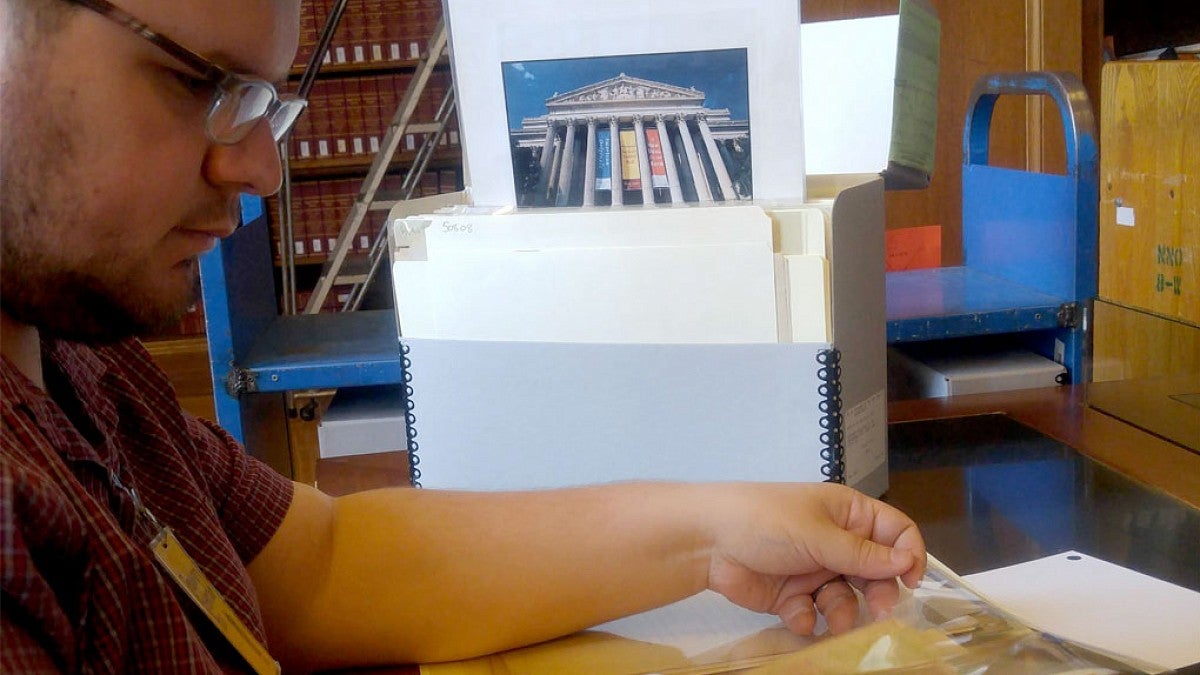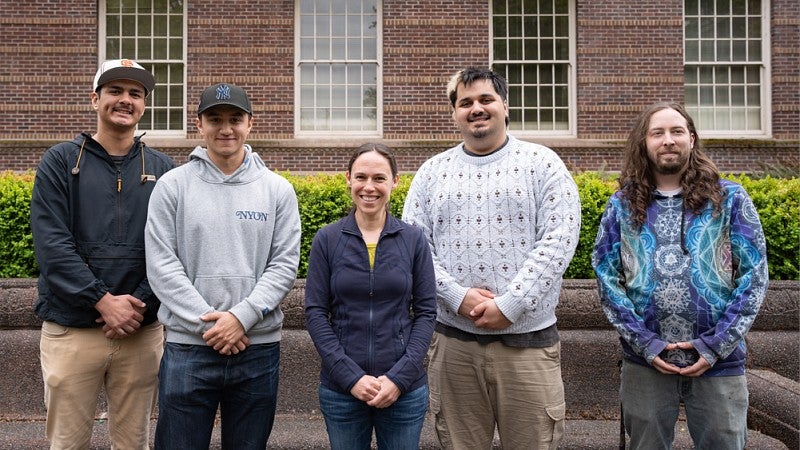
Experiential Learning | Research & Innovation | Community Impact | Career Preparation | Teaching Excellence | 21st Century Liberal Arts | Building Community | Good Vibes | CAS Spotlights | All Stories | Past Issues

April 26, 2024
Putting History into Action
The mystique of many a tech founder’s origin story is embedded into US history: A solitary figure working long days and nights in a Bay Area garage, fueled by a desire to develop the next cutting-edge technology.
But that’s not the whole story.
In a January 3 Time essay, College of Arts and Sciences history PhD student Adam Quinn wrote that histories of tech entrepreneurs like Steve Jobs and David Packard and Bill Hewlett ignore the decades of factory workers who produced components crucial for the growing tech industry—not to mention the resulting environmental degradation and workplace injuries.
“I wanted to speak to how we can learn from history,” says Quinn, who condensed his exhaustive dissertation on the environmental and labor history of computers and used public history methods to provide the historical context of the semiconductor industry, “and how history can inform ongoing efforts by unions and environmental groups to address these problems of pollution of poor working conditions, of union busting in the computer industry.”
Public history isn’t just about sharing museum exhibits or condensed articles. It’s a way to educate the public and strengthen democracy at a time when people have so much information to wade through. Under the mentorship of faculty members trained in public history, College of Arts and Sciences students like Quinn are becoming the next generation of historians, who can connect with communities and share histories in accessible ways.
The University of Oregon is one of the few institutions in the region that offer such training.
“Public history can help draw more students from throughout the region and country,” says Marsha Weisiger, associate professor and Julie and Rocky Dixon Chair of US Western History. “There’s a huge demand for trained public historians for academic jobs, as well as for public history kinds of positions, which could bolster our reputation.”
Finding space for public history
Most of us may experience public histories while attending local museums, such as the Museum of Natural and Cultural History on campus, or a monument in a city’s downtown.
In fact, since 2020, many of us have been engaging in public history even if we don’t realize it. The recent debate on removing historical monuments—such as Christopher Columbus and Confederate figures— is an example of engaging with public history.
“Should these statues be removed? And who decides?” says Katie Macica, a postdoc instructor in the Department of History. “It’s an interesting question.”
That question is core to public history. Rather than historians deciding what should be recognized as belonging to the public, these historians engage with the communities these figures and stories represent.
“If you’re doing public history well, you’re working with the public and the community to help them understand the past and make it useful and meaningful to them in the present,” Macica says. “It’s not just translating academic history for a public audience. The really important part is the collaboration.”

Studying public history
Since the fall 2023 term, Macica has been leading a course per term focused on public history, and many of the other history faculty members incorporate its methodologies in their curriculum.
In her courses, Macica takes her students to library archives, museum exhibits, monuments, and memorials. These venues allow students to explore how history is presented to the public, diving into the decision-making that determines what is kept, preserved and memorialized, and exploring what it means when voices are left out.
“What are ways that we as historians can try to find and understand the silences and then maybe bring those to light?” Macica says.
As a graduate student, Quinn has worked with Associate Professor Steven Beda, who designs his course assignments to train students on methods for communicating with the public. For example, Beda has students write op-eds and news articles, skills that came in handy when Quinn wrote his Time magazine essay.
“That’s been a big part of my training as a historian—to speak to the public,” Quinn says.
I take what I’m researching and writing about at longer length, then translate it to more of a concise piece that speaks to present-day issues.
Public history maintains all the academic research rigor of the discipline while providing students a way to feel more at home at the Eugene main campus by collaborating and connecting with local and Oregon history.
As a public historian, Weisiger has a long resume, which includes writing about Wisconsin’s architecture and working at the Oklahoma State Historic Preservation Office. She sees the field as something that leads to jobs in varied spaces, from corporations to museums to law firms but also fosters connections between students and the communities they’re studying in.
“When I was an undergraduate at Arizona State University first getting my feet wet in public history, it made me feel more at home than I had ever felt living in Tempe once I learned the history of the place,” Weisiger says. “It made me fall in love with that community.”
The impact of public history
Looking beyond the day-to-day work of a public historian, the role is a way to revive the societal importance of historians in society.
Public history is a sort of return to how historians interacted with knowledge, driven by a deep curiosity for subjects and a desire to engage with the public in debate on intellectual topics, says Vera Keller, history department head and professor.
“That’s important to me when I think about our mission as a public university and my mission as a historian,” Keller says.
The deep research that historians do—spending time in archives, reading books, conducting interviews—is filled with evidence and critical reasoning. Public history created by faculty and students can end up in various places through a variety of methods, from consulting with the National Parks Department on its programming to writing amicus briefs for the US Supreme Court, Keller says.
Whether presenting the full story of the tech industry as Quinn did in Time or challenging biases in AI-created content, public history can train the next generation of intellectuals and workers to present information in a more human-centric way. That can have a societal impact of bringing people together, rather than continuing to tear them apart, Keller says.
“It’s not just about career skills or getting niche scholarship out there,” she says. “Public history is vital to society. And it is increasingly vital at this moment because democracy is under threat. We often think that democracy is stable. But as historians, we have seen that it is the exception, not the rule. As Tom Friedman wrote in the New York Times in 2016, we seem to kick around our country like a football, but it should be treated more like a Fabergé egg.”
—Henry Houston, MA ’17 (international studies) is a communications coordinator for the College of Arts and Sciences
